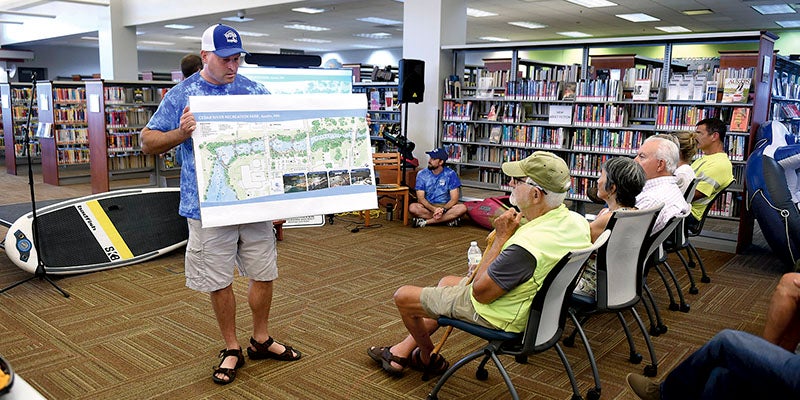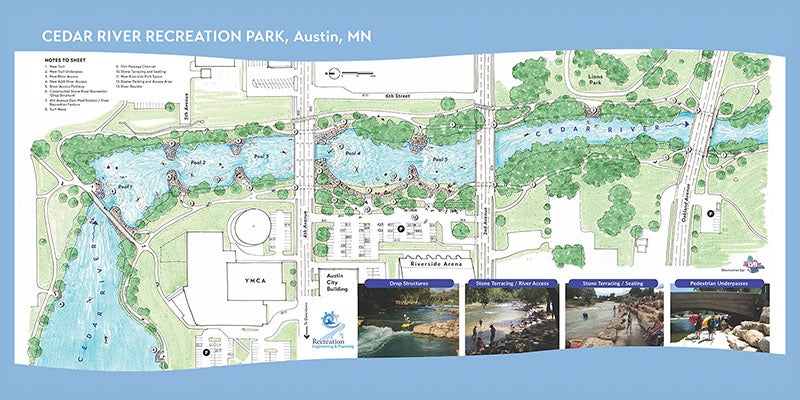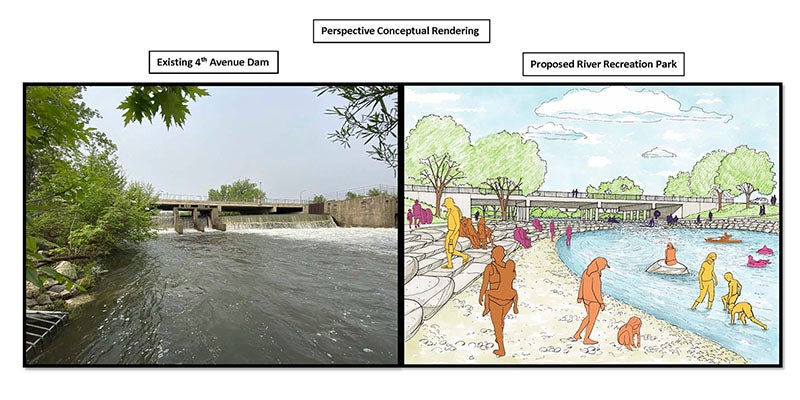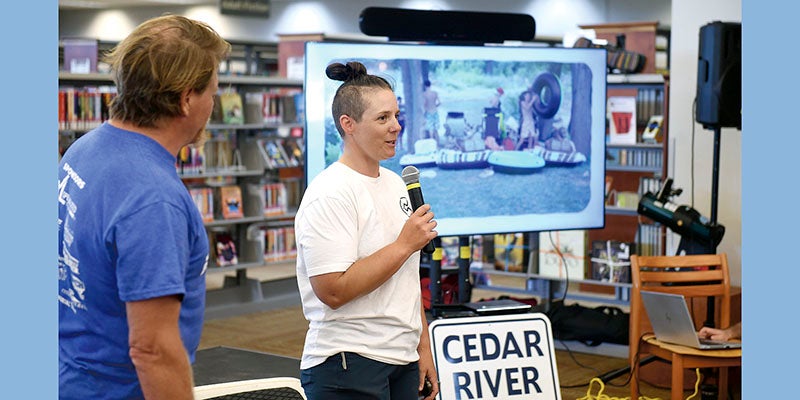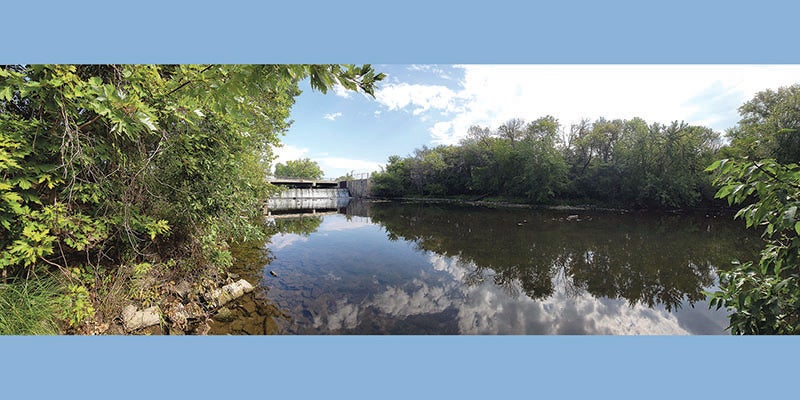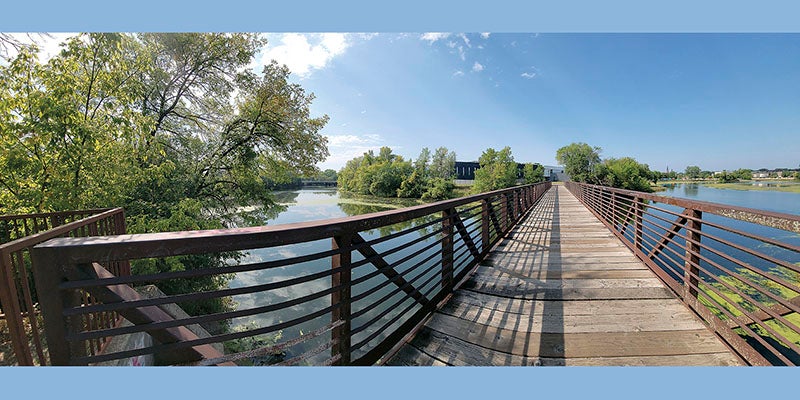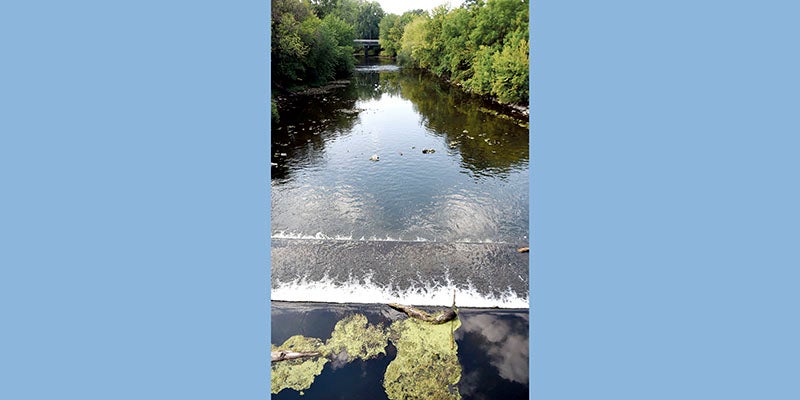Whitewater park churns up momentum after release of feasibility study
Published 2:53 pm Wednesday, August 23, 2023
|
Getting your Trinity Audio player ready...
|
Community gets broad look of estimated $10M project Tuesday night
A feasibility study released this week has shown that a proposed whitewater park on the Cedar River is possible, a major step forward for the largely citizen-driven project that organizers hope will bring attention, people and dollars into Austin.
Revealed during the City Council meeting Monday night and again during a public meeting Tuesday night at the Austin Public Library, the project comes with an estimated price tag of $10 million and would create a series of rapids, a wading area and paths along the project’s projected run.
“There was a lot of good talk about the future and how this project can help us toward the future and make us a destination and grow,” said Nate Smit of Tuesday night’s meeting.
The company behind the feasibility study, Recreation Engineering & Planning out of Boulder, Colorado, noted that while the Cedar River is a small river in its headwaters area of Mower County, it has enough water to provide for quality whitewater features for most of the year. Many popular whitewater parks have similar flows.
Conceptual images show the park starting at the pedestrian bridge behind the YMCA at the Austin Community Recreation Center and ending at Second Avenue NE. Between those points are a series of five drops and five pools that will allow for users to run the course.
Along the way rock structures will help create the whitewater obstacles geared for both seasoned and new whitewater enthusiasts.
The course will further be augmented by proposed stone bank terracing along the final two pools as well as a pedestrian trail planned for the west side of the river and going under the bridges.
The dam itself would be removed and reworked as part of the project.
If completed, the park would be a first for the state of Minnesota with the only other parks close to Austin regionally being St. Charles and Manchester, Iowa; parks Smit and the group have taken inspiration from.
Supporters of the park, including City Council member Mike Postma, said that a park like this can only be a part of the city’s overall priorities of beautifying the community and making it a destination.
“This really, really fits that bill,” Postma told the crowd Tuesday night.
Proponents also point out that aside from recreational opportunities, the park carries with it other benefits, especially in four prime areas: quality of life, environmental benefits, safety and economic benefits.
The whitewater park group has stated that there is a potential to draw in close to $2 million or more in added economic impact to the community, partially because of its location to the Twin Cities, Rochester and more of the surrounding communities, something Smit said has been part of the early planning processes.
“Let’s start talking to people in Rochester. Let’s start talking to people in the Twin Cities to see if this is even interesting,” Smit said of past efforts.
Among those advocating for the park were whitewater athletes Hannah Ray J and Marty Colbert, who were both at Tuesday night’s meeting and have been involved in several other projects of a similar nature.
Both were impressed by the project’s scope and spoke to how a park like this, that can be utilized for most of the year, can be a boon to the community.
“What Nate and his team have done so far is incredible for what they have,” Ray J said. “This is essential to make this project move forward, gain traction and hopefully come to fruition. Having this community support is crucial and I think they have it.”
At the same time, there were those in the crowd Tuesday night that appeared skeptical of the project, worried about what kind of effect it could have on fishing in Mill Pond or whether or not it was even possible given current conditions of Mill Pond.
Covered with large swaths of green algae, some questioned whether or not the water was safe coming out of Mill Pond.
“We want to be able to address their concerns,” Ray J said. “Whether or not they change their minds is up to them, but at least we know we can address them.”
Assistant City Engineer Mitch Wenum answered the fishing question Tuesday night, assuring people that water levels in Mill Pond will not drop, even after the dam at Fourth Street SE is removed as part of the project.
The plans for the park itself also include narrow side channels, or fish ladders, built into the river’s east side to allow fish and other aquatic species to migrate up and down the river.
Meanwhile, those that are on the group from the Mower County Soil and Watershed District said they understand the questions of the algae, but added existing conditions over the last few years related to lack of rain and climate have played a part in the process.
However, while Mill Pond is coated with algae, the river after the dam, where the park would flow, is largely free of it.
“It’s flow. The dam knocks it out,” said SWCD Outreach Coordinator Tim Ruzek, saying a lot of the problem areas lie on the river to the north of Mill Pond where the flow is restricted. “The problem area is the Wildwood forested area because things fall in and then there’s not enough flow and things slowly pack together. Going south of town you get the ripples, it helps spread out things in the water and gets clearer looking.”
The study also looked at how the whitewater structures would handle flooding and found no negative effects.
While Wenum said the early conceptual price tag sits at $10 million, it’s possible the project falls anywhere between $7-$15 million when completed.
He also told the City Council Monday night that the city will be increasingly important as the project moves along, something many on the council supported, but said outside funding sources also need to be secured.
Still, the reception among some in the council was optimistic.
“From a city perspective we had a real watershed moment at the City Council meeting,” Smit said. “Mayor Steve King talked about how we don’t just do our job for today. Our job is to think about the future of the city.”
Likely still two to three years out, Smit said the next step is to continue pushing forward in steps in order to maintain momentum.
“We got approval from the city council (Monday night) for the city to request funding for the project from the Hormel Foundation and that will go into their process” Smit said. “If so, we’ll immediately start the project. We’ll start the early engineering of space and then we’ll do a phased approach.”
As for what the park could be if completed, Ray J said it’s as optimistic as any project she’s seen.
“I think you have a high potential,” she said. “I have never seen, thus far, an organization that has the resources that Austin has and the location to draw for this.”


